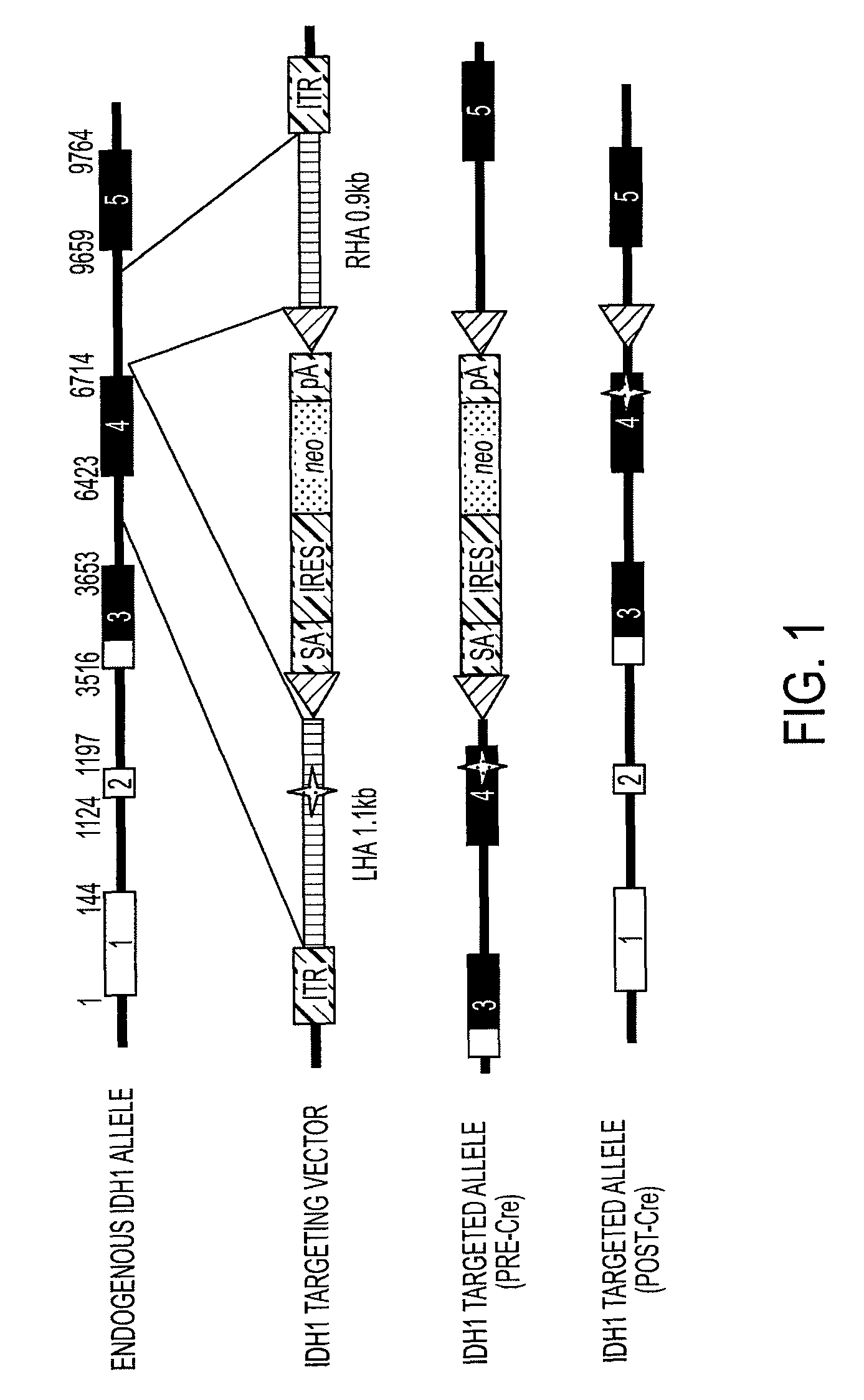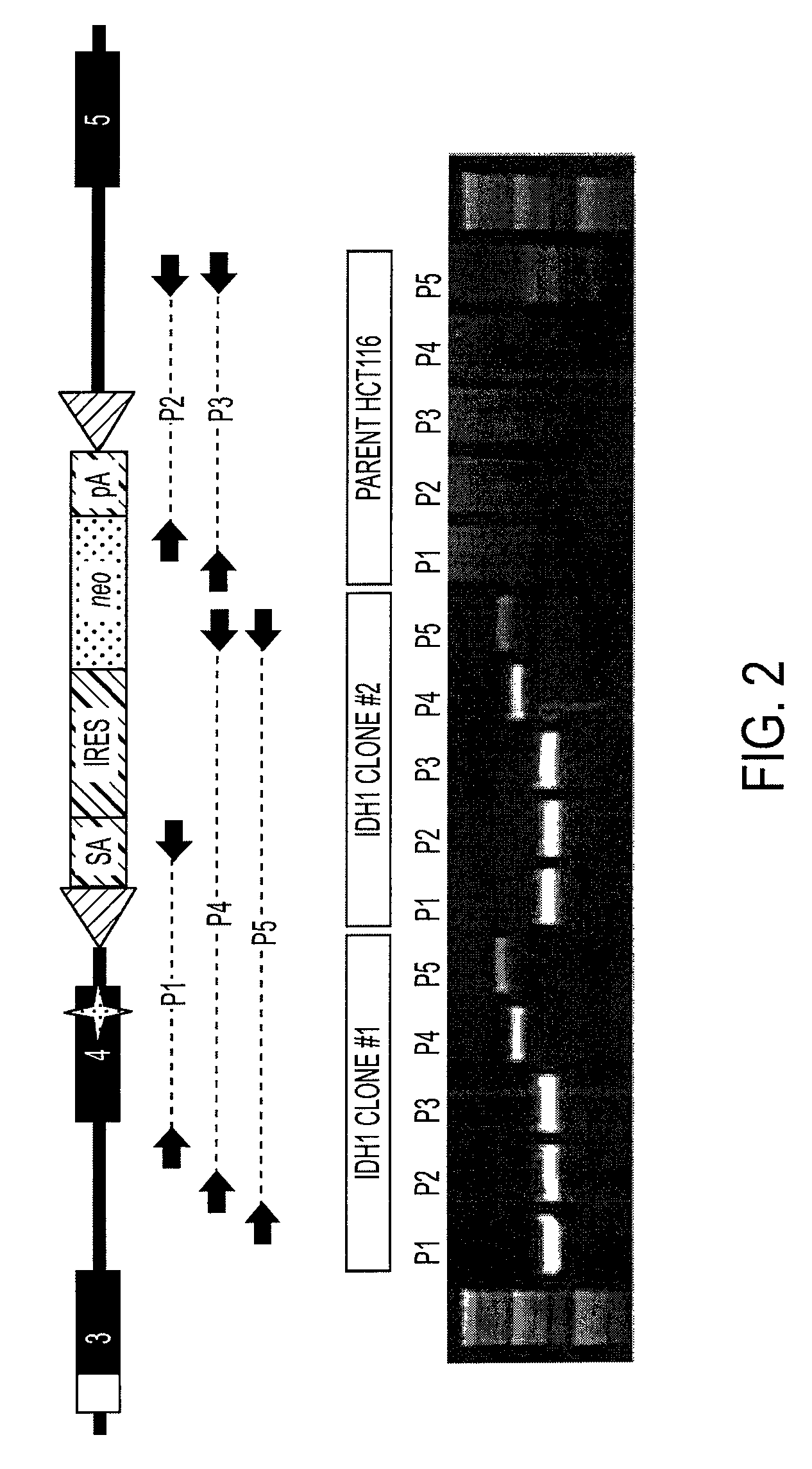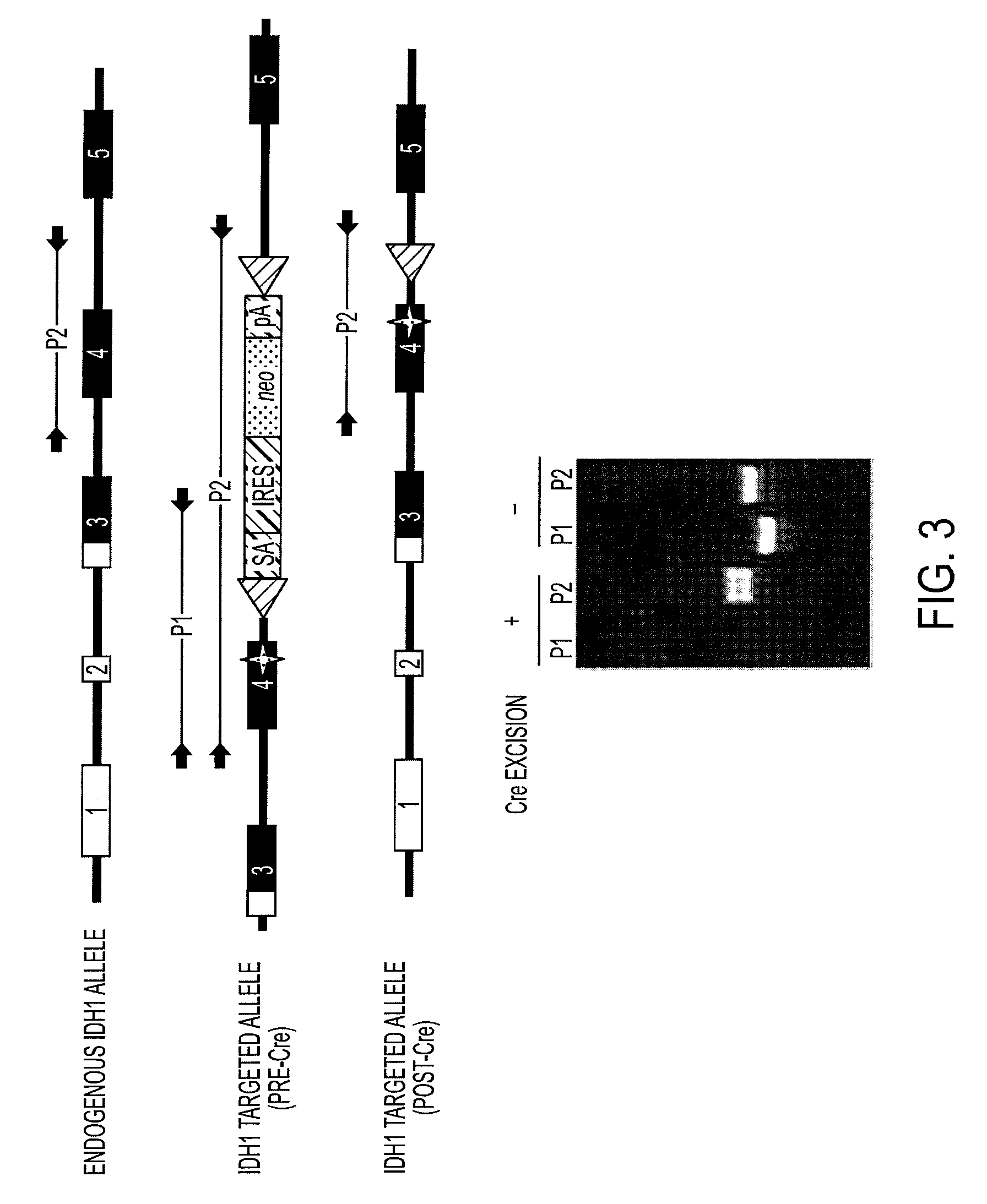Homozygous and heterozygous IDH1 gene-defective cell lines derived from human colorectal cells
a cell line and heterozygous technology, applied in the field of homozygous and heterozygous idh1 genedefective cell lines derived from human colorectal cells, can solve the problems of undefined functional effects and significance of idh mutations in human cancer, and no cell line model which recapitulates idh mutation-dependent tumor progression
- Summary
- Abstract
- Description
- Claims
- Application Information
AI Technical Summary
Benefits of technology
Problems solved by technology
Method used
Image
Examples
example 1
Generation of IDH1R132H Isogenic Human Colorectal Cancer Cell Lines
[0030]As compared with other methods to inactivate or activate genes in cultured cells such as RNAi and recombinant protein expression systems, knock-in methods arguably provide the most powerful technique available to recapitulate naturally occurring genetic alterations. To achieve IDH1R132H mutations, established protocols were utilized for gene targeting via homolgous recombination with recombinant adeno-associated virus (rAAV) constructs. HCT116, a near diploid, mismatch repair-deficient cell line derived from colon carcinoma, is the most efficient and widely used human cell line for gene targeting. For IDH1 gene targeting, we used a HCT116-derived parental cell line. Targeting vectors were constructed to introduce IDH1R132H alleles in the HCT116 cell line (FIG. 1). An infectious rAAV stock harboring the targeting sequence was generated and applied to the parental cell line, generating cell clones that harbor the...
PUM
| Property | Measurement | Unit |
|---|---|---|
| time | aaaaa | aaaaa |
| frequency | aaaaa | aaaaa |
| microscopy | aaaaa | aaaaa |
Abstract
Description
Claims
Application Information
 Login to View More
Login to View More - R&D
- Intellectual Property
- Life Sciences
- Materials
- Tech Scout
- Unparalleled Data Quality
- Higher Quality Content
- 60% Fewer Hallucinations
Browse by: Latest US Patents, China's latest patents, Technical Efficacy Thesaurus, Application Domain, Technology Topic, Popular Technical Reports.
© 2025 PatSnap. All rights reserved.Legal|Privacy policy|Modern Slavery Act Transparency Statement|Sitemap|About US| Contact US: help@patsnap.com



